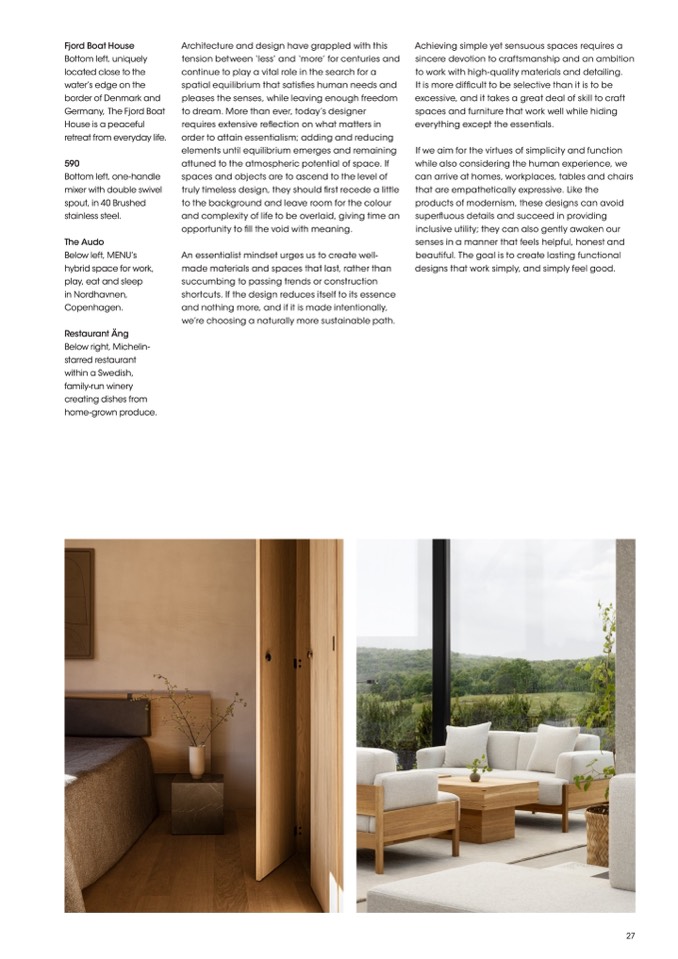
Fjord Boat House
Bottom left, uniquely
located close to the
water’s edge on the
border of Denmark and
Germany, The Fjord Boat
House is a peaceful
retreat from everyday life.
590
Bottom left, one-handle
mixer with double swivel
spout, in 40 Brushed
stainless steel.
The Audo
Below left, MENU’s
hybrid space for work,
play, eat and sleep
in Nordhavnen,
Copenhagen.
Restaurant Äng
Below right, Michelin-
starred restaurant
within a Swedish,
family-run winery
creating dishes from
home-grown produce.
Architecture and design have grappled with this
tension between ‘less’ and ‘more’ for centuries and
continue to play a vital role in the search for a
spatial equilibrium that satisfies human needs and
pleases the senses, while leaving enough freedom
to dream. More than ever, today’s designer
requires extensive reflection on what matters in
order to attain essentialism; adding and reducing
elements until equilibrium emerges and remaining
attuned to the atmospheric potential of space. If
spaces and objects are to ascend to the level of
truly timeless design, they should first recede a little
to the background and leave room for the colour
and complexity of life to be overlaid, giving time an
opportunity to fill the void with meaning.
An essentialist mindset urges us to create well-
made materials and spaces that last, rather than
succumbing to passing trends or construction
shortcuts. If the design reduces itself to its essence
and nothing more, and if it is made intentionally,
we’re choosing a naturally more sustainable path.
Achieving simple yet sensuous spaces requires a
sincere devotion to craftsmanship and an ambition
to work with high-quality materials and detailing.
It is more difficult to be selective than it is to be
excessive, and it takes a great deal of skill to craft
spaces and furniture that work well while hiding
everything except the essentials.
If we aim for the virtues of simplicity and function
while also considering the human experience, we
can arrive at homes, workplaces, tables and chairs
that are empathetically expressive. Like the
products of modernism, these designs can avoid
superfluous details and succeed in providing
inclusive utility; they can also gently awaken our
senses in a manner that feels helpful, honest and
beautiful. The goal is to create lasting functional
designs that work simply, and simply feel good.
27

